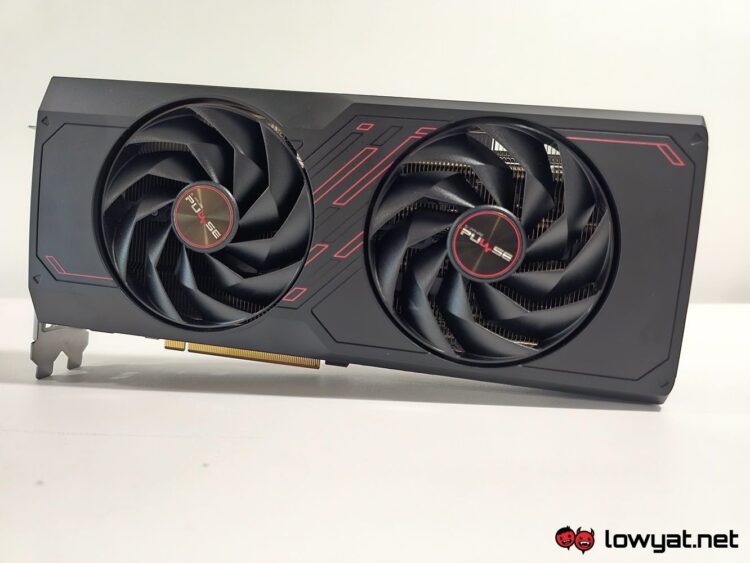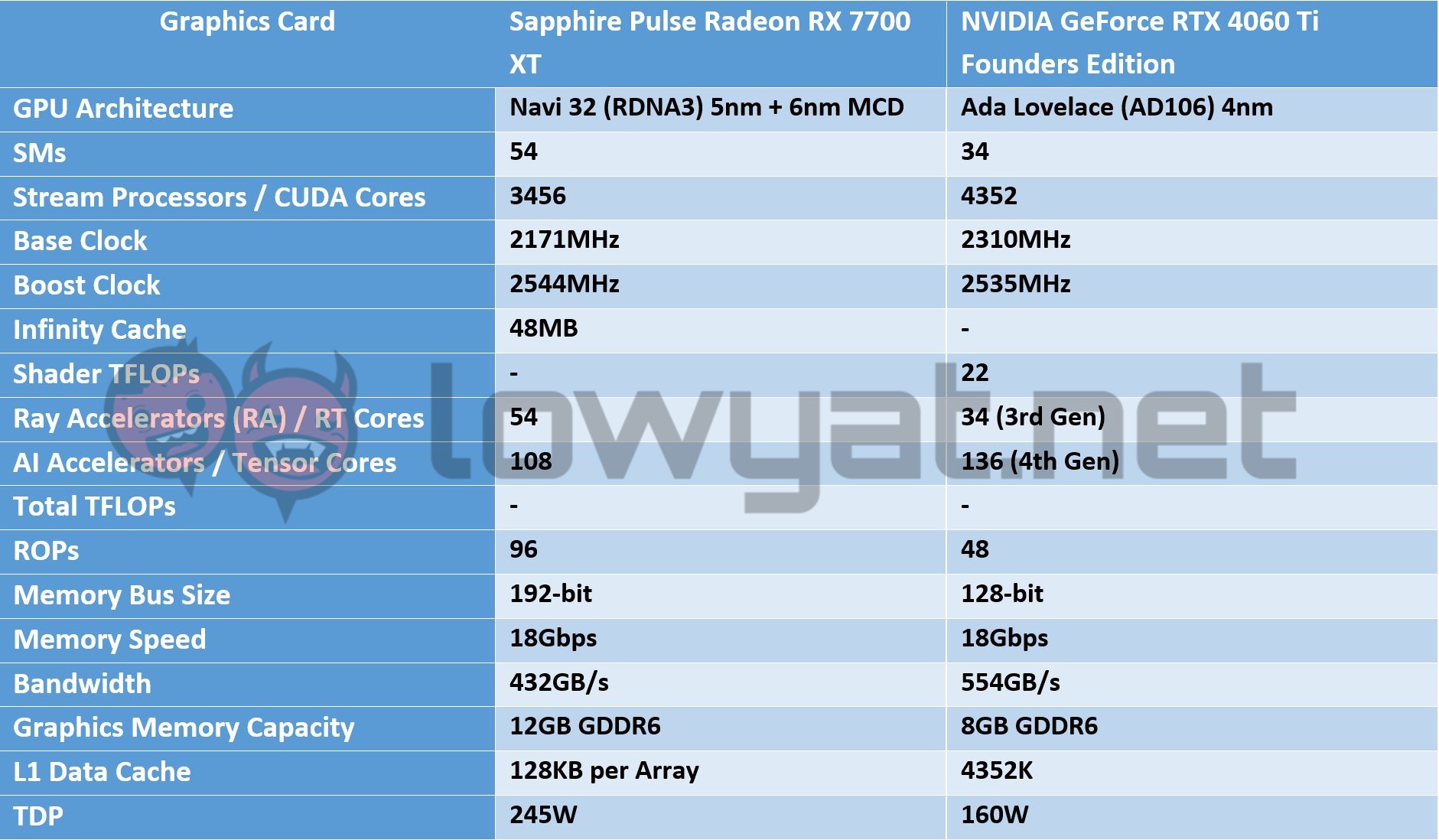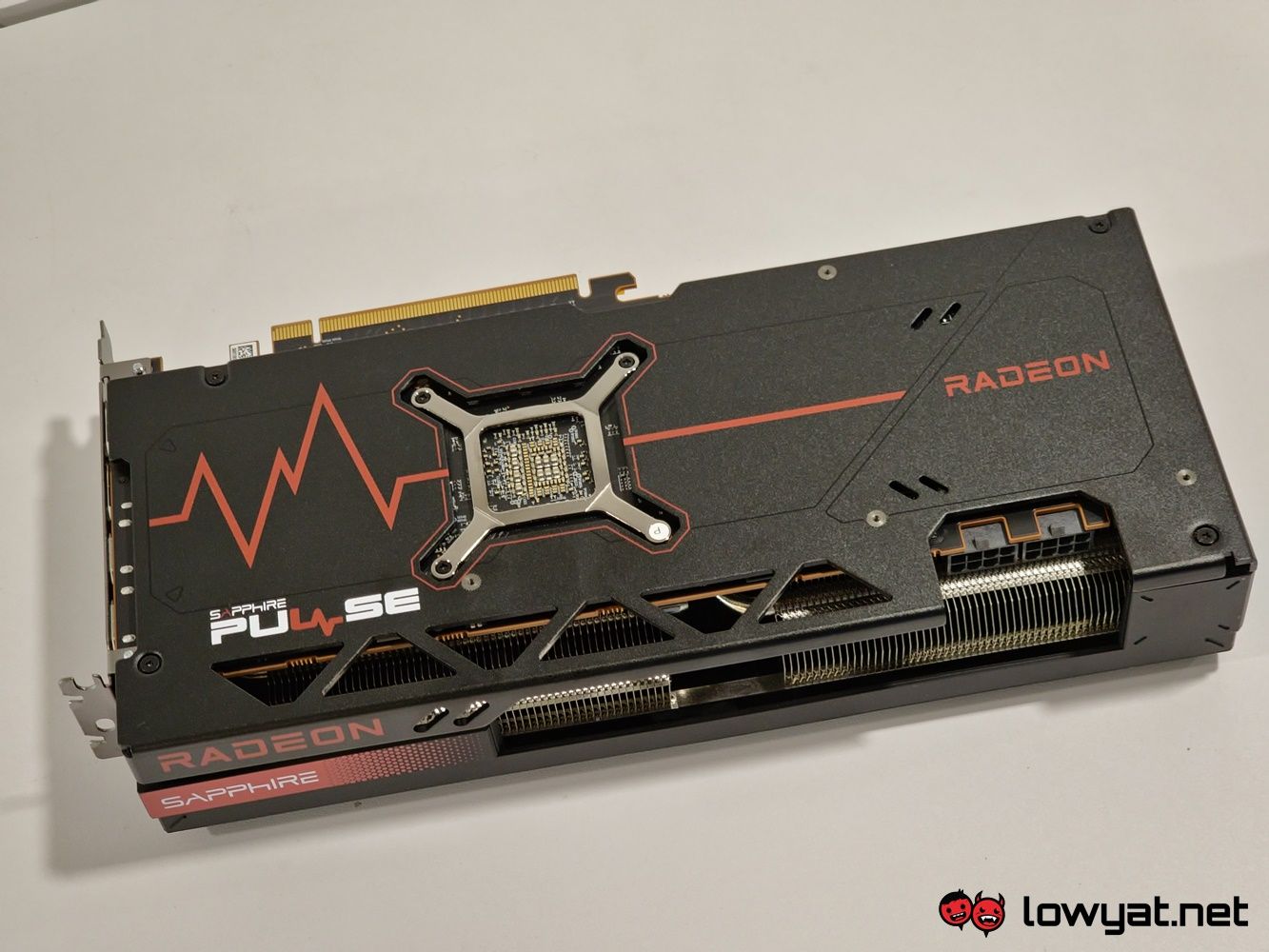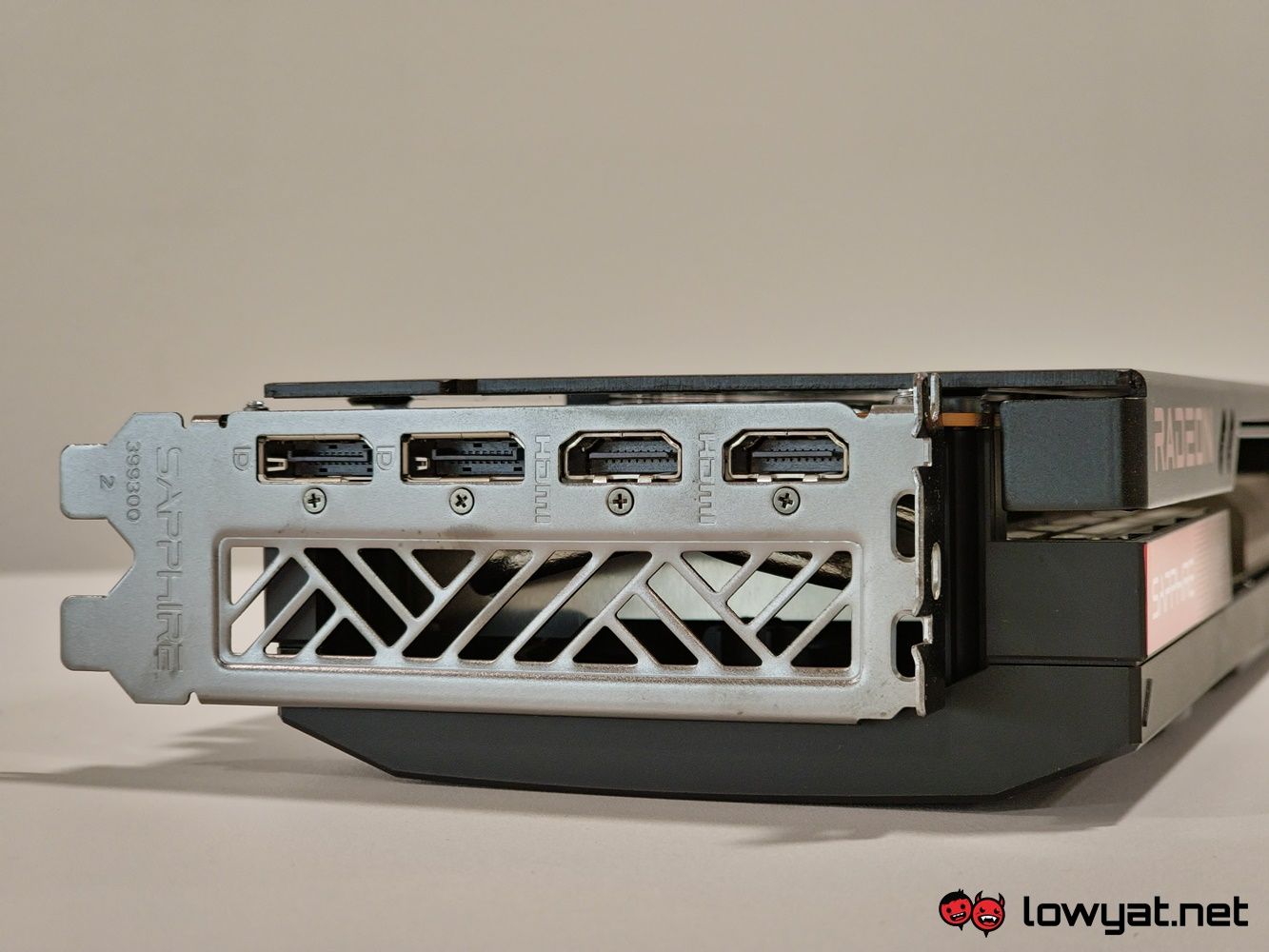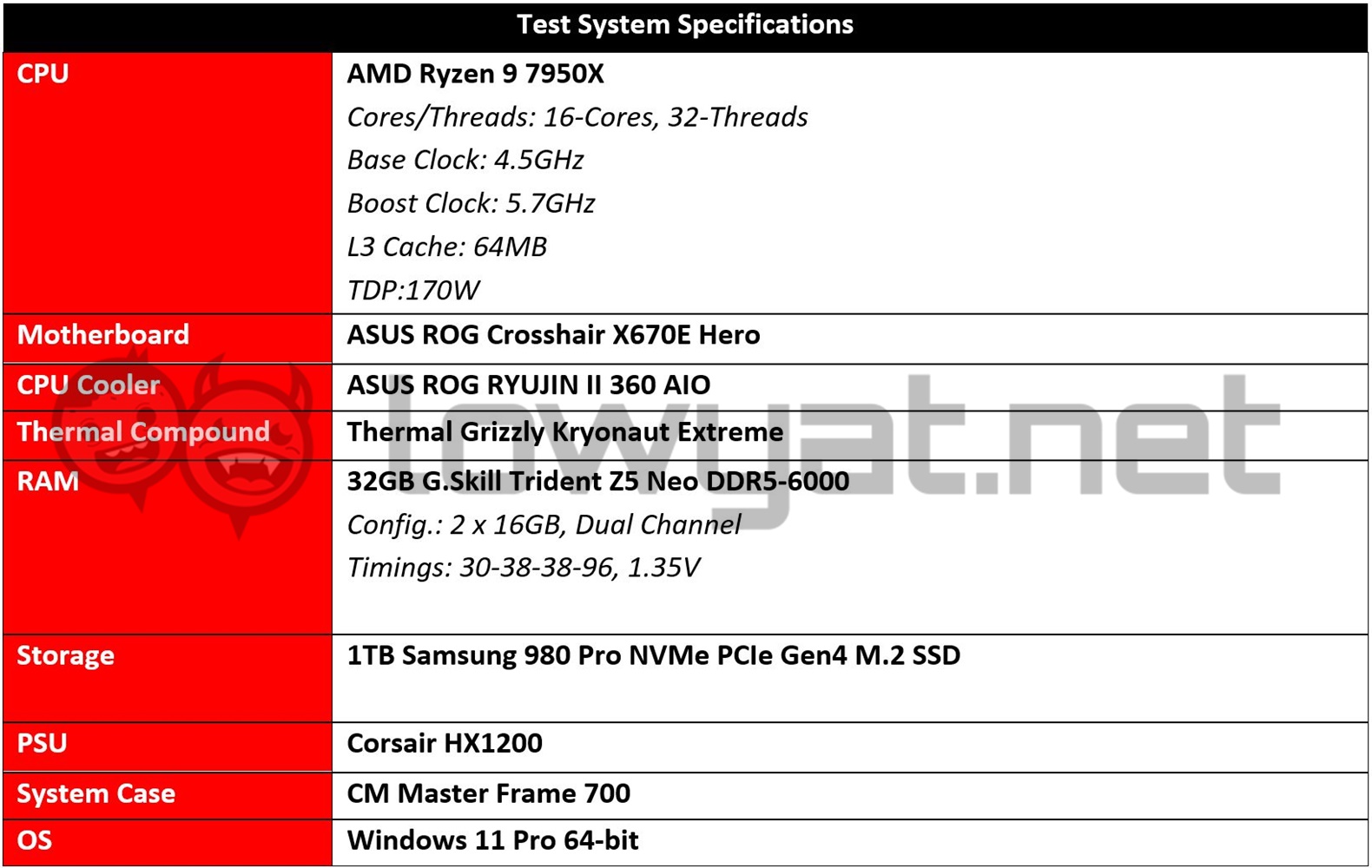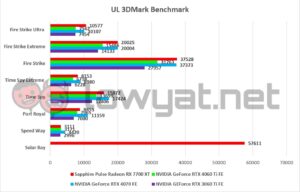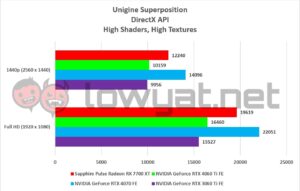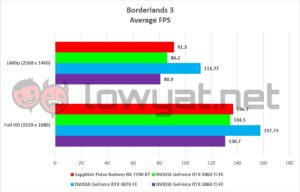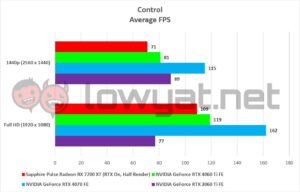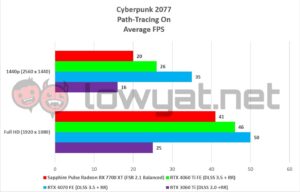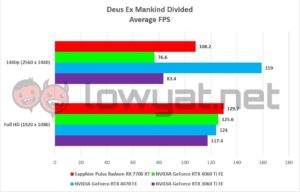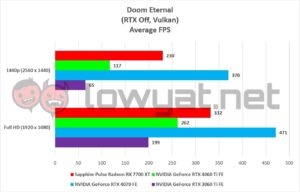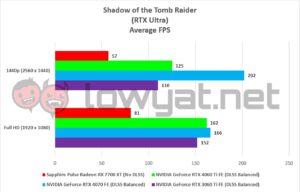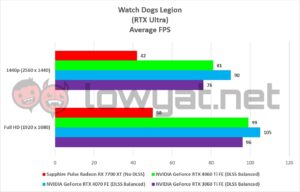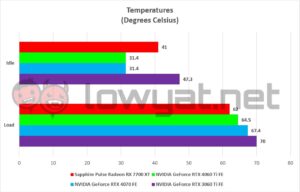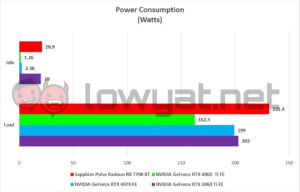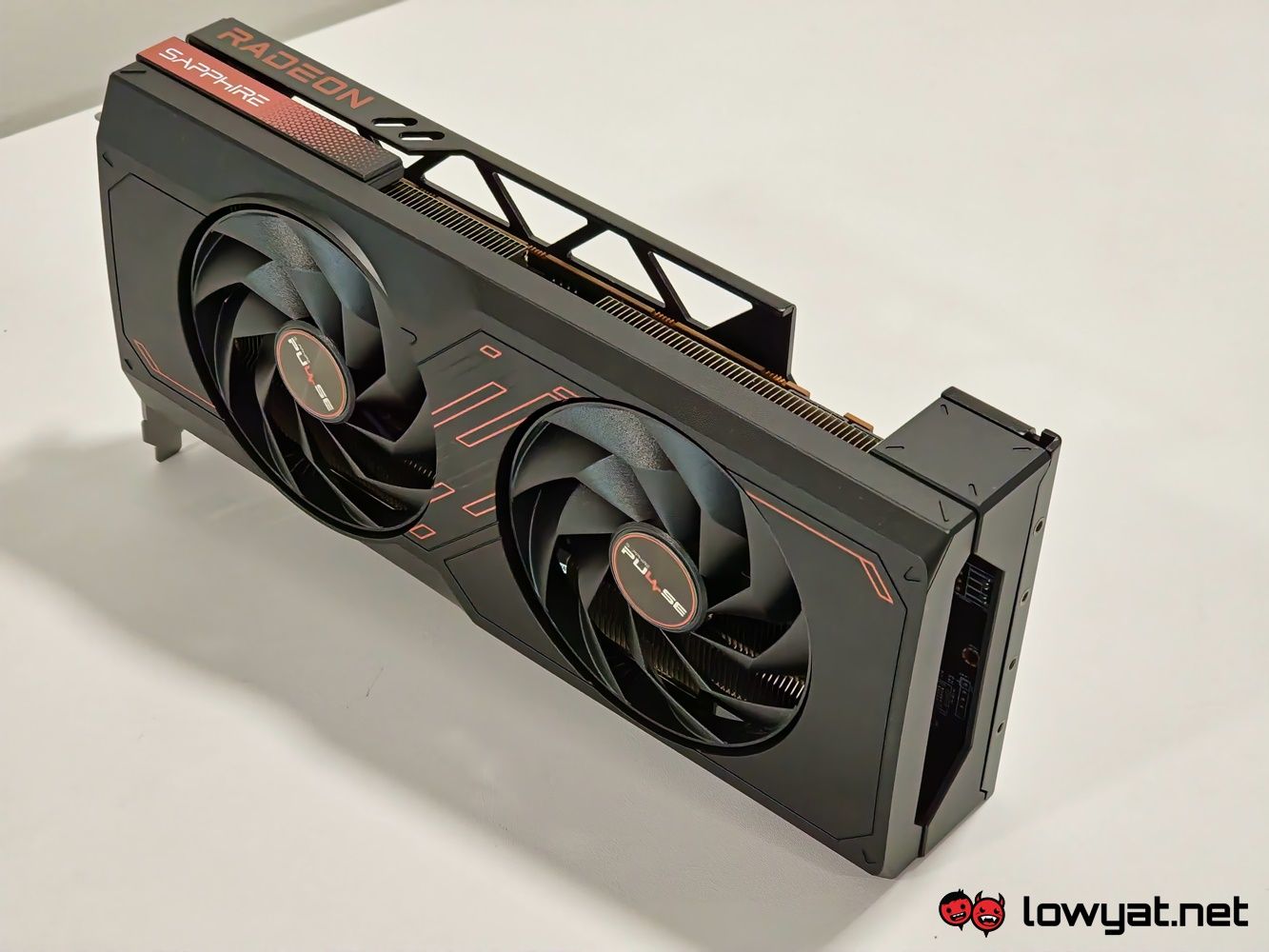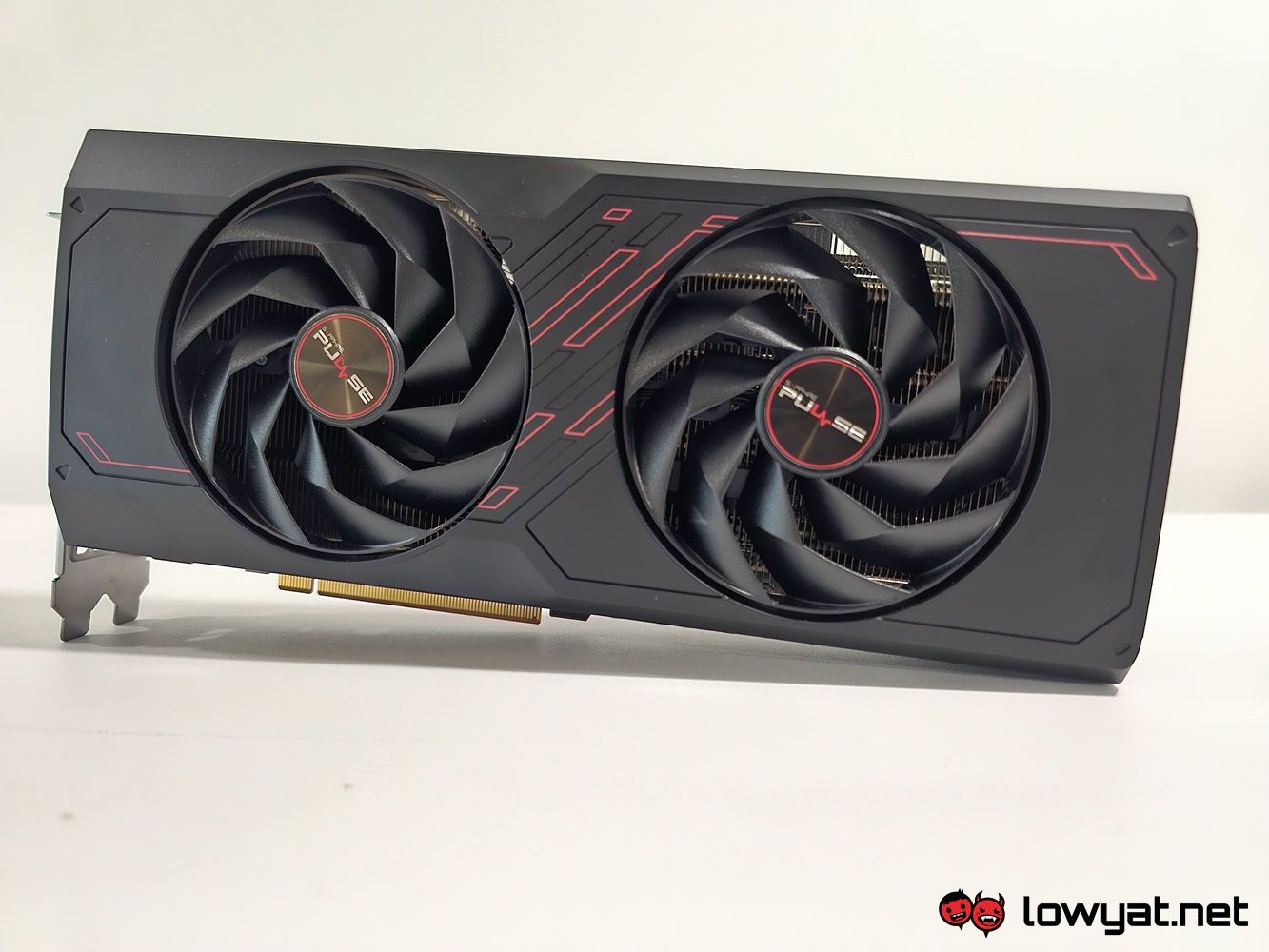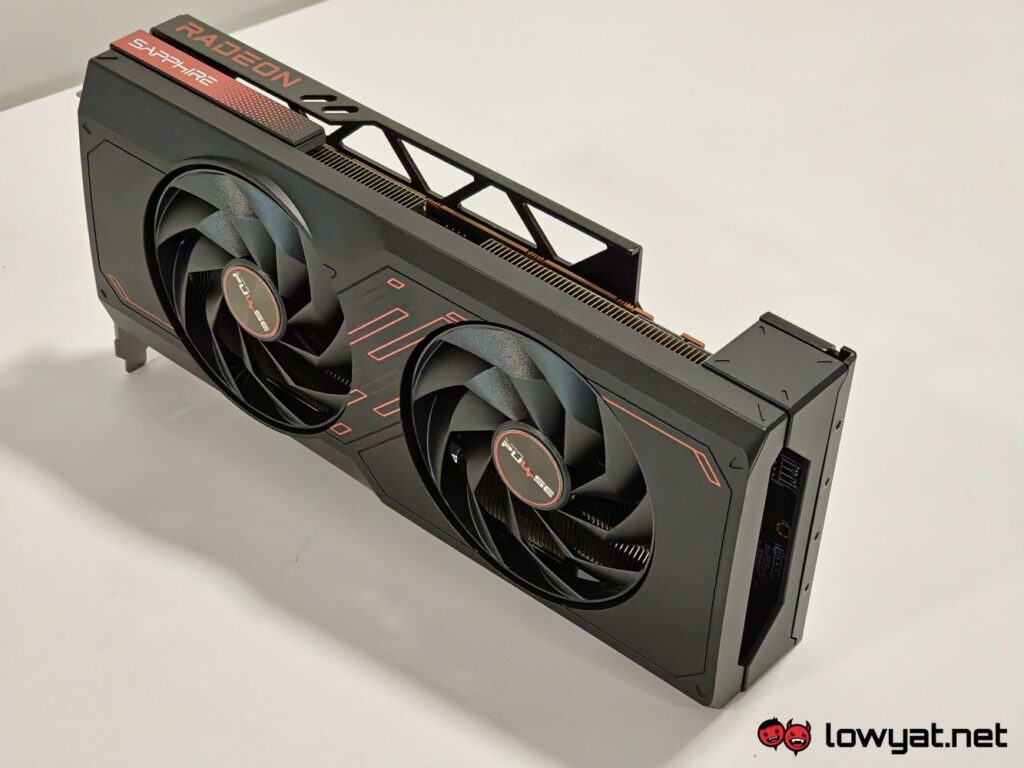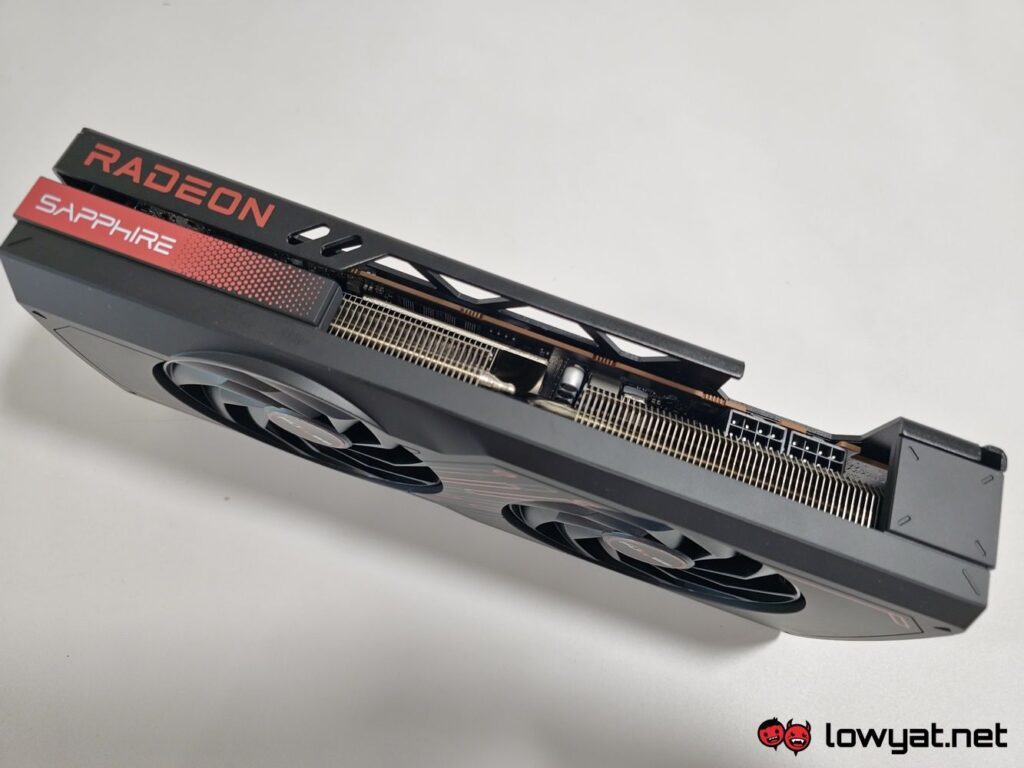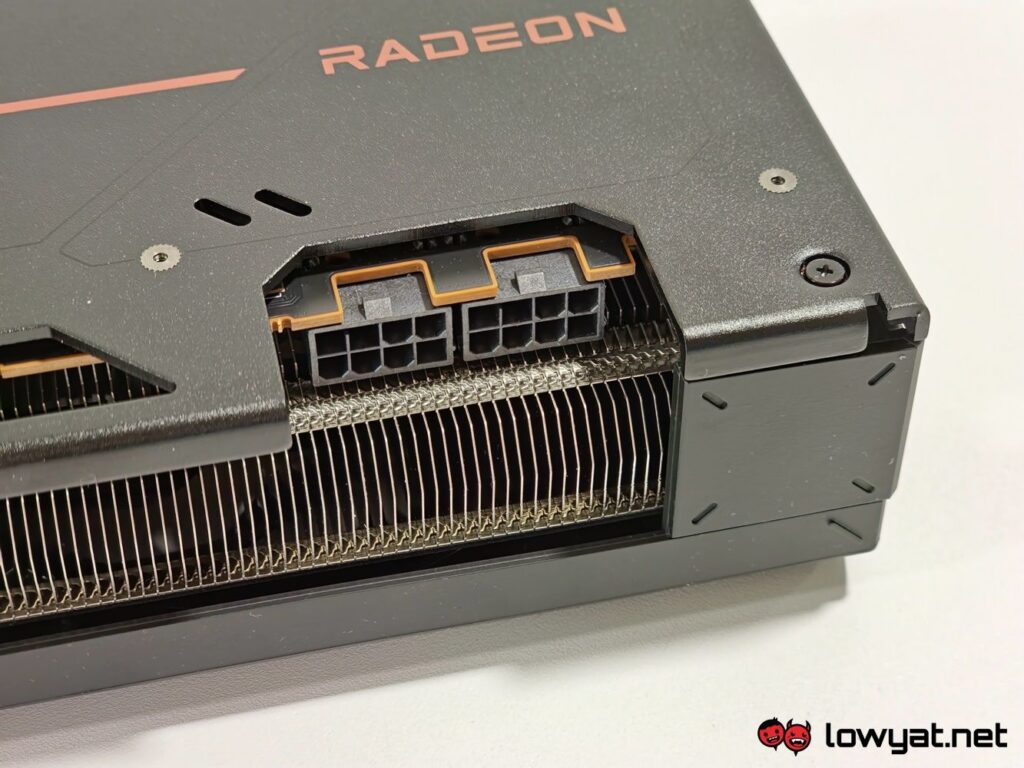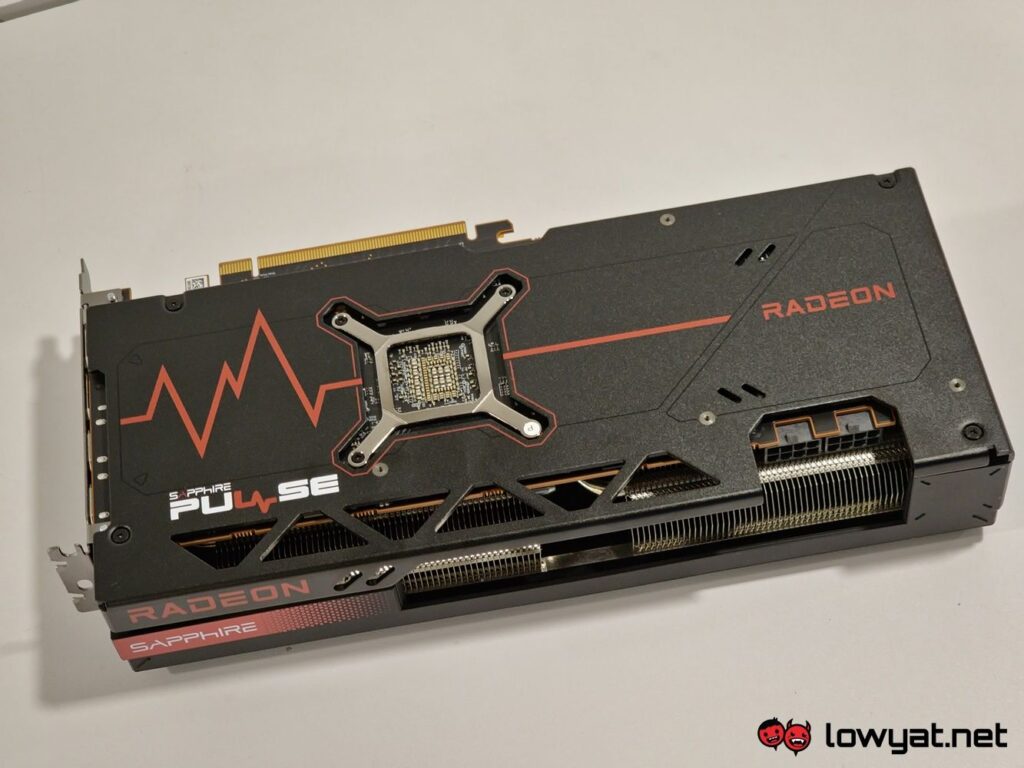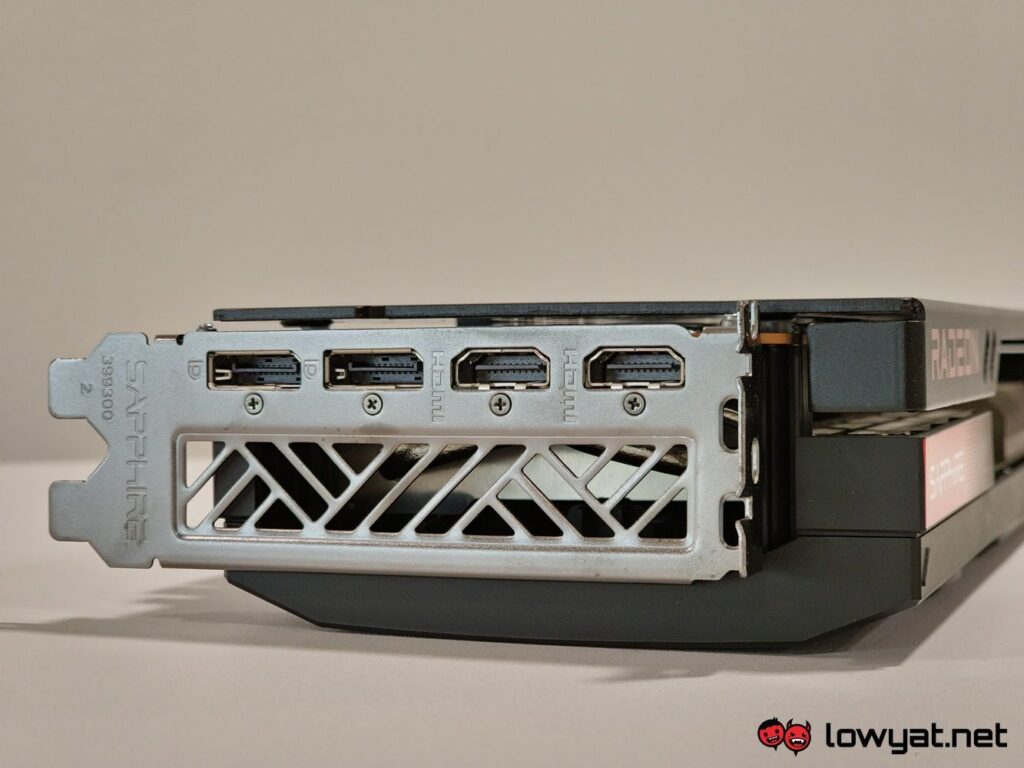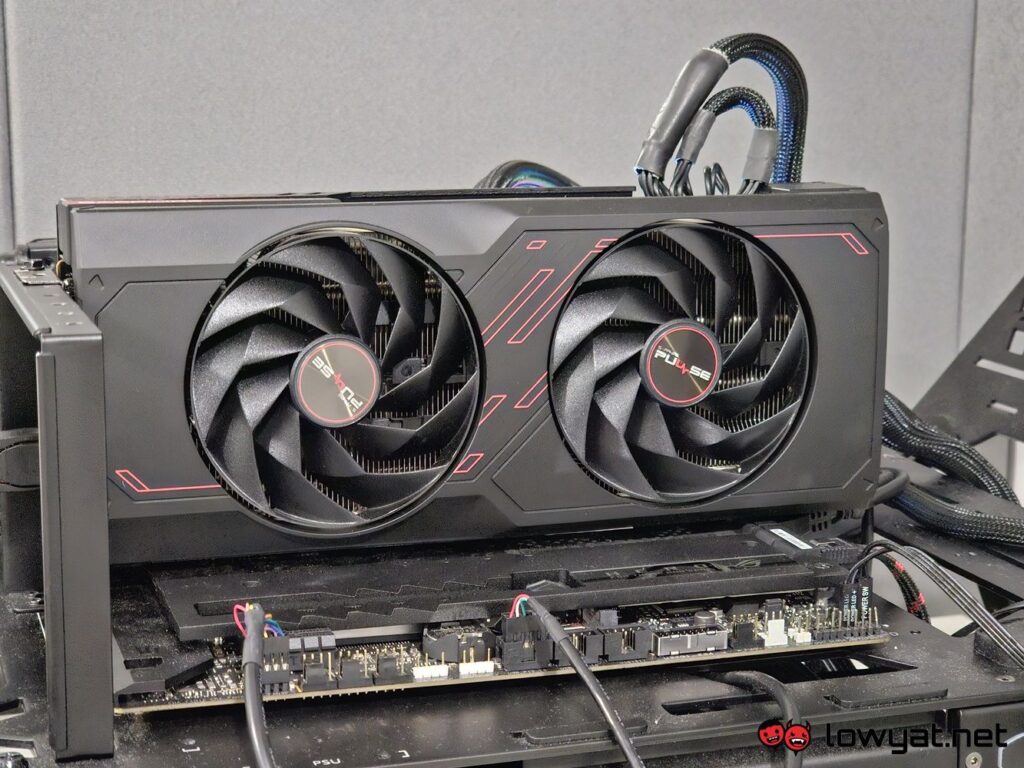Back in August, AMD announced two new Radeon 7000 series graphics cards during Gamescom 2023: the Radeon RX 7800 XT and the 7700 XT. I’ve already tested out the former, where I found that it was more than capable in gaming at QHD (2,560 x 1,440) resolution, both with and without the current trend and visual accoutrement that is ray-tracing.
In this review that, confessedly, is coming out a tad bit later than usual, we’ll be looking at the “lesser” of the two mid-range RDNA3 graphics cards, the 7700XT.
Specifications
Card Design
So, in case you’ve been living under a rock prior to the grand launch of AMD’s latest mid-rangers, the 7700 XT, unlike the 7800 XT, does not have a reference cooler design. That means that AMD is leaving all shroud and cooling designs to its AIB partners, and the model I have in my labs comes from one of the chipmaker’s oldest partners, Sapphire.
In this case, the card in question is a Sapphire Pulse Radeon RX 7700 XT. I won’t elaborate too much on the specifications on the card, as you can read the specs sheet I’ve included in the section above. What needs to be mentioned, though, is the boost clock of this card, which is set at 2,544MHz.
As for the aesthetics of this 7700 XT, Sapphire is one of those brands that likes to keep things simple, yet functional. The cooler shroud looks enticing all around the card but unlike most of its rivals, it’s not loud or garish. Even the heatsink affixed to the GPU is relatively low profile; that’s trait alone has been a respite for me, in a sea of modern GPUs fitted with massively oversized, overengineered, state-of-the-art cooling solutions and fans. Designs that, sometimes, forces me to ask the question “Will this fit in my PC?” or “Will my testbench be able to hold this card?”
Around the back of the card, the Pulse 7700 XT sports the exposed GPU in the rear, where on the retention bracket that holds the card’s heatsink at the front, is held in place. For output, the card ships out with two HDMI 2.1 ports and two DisplayPort 2.1 ports.
Testbench
Given that the 7700 XT is a step down the ladder from 7800 XT, it only seems fair that I draw comparisons from direct rival, the RTX 4060 Ti and technically, the RTX 4070 as well. I’ve thrown the RTX 3060 Ti into the graphs for good measure, but it also gives us a look at how AMD’s RDNA3 lower blue-collar mid-range GPU fares against a card from a generation ago. On that note, I would have added the 6700 XT to the list but unfortunately, I don’t have said card in my lab.
Like the 7800 XT, the benchmark metrics, particularly in gaming, have been limited to just two resolutions: 1440p and Full HD (FHD). While the card is certainly capable of running at 4K, it’s obviously not going to be able to provide with a fluid gaming experience at that resolution because let’s be real here: if you really wanted to game at 4K, a 7700 XT wouldn’t even make it past the screening process
Benchmarks, Temperatures, and Power Consumption
As you can see from the charts alone, the Pulse 7700 XT more or less blows the RTX 4060 Ti out of the water but clearly struggles to catch up to the RTX 4070 in gaming. On a synthetic level, it manages to match the RTX 4070 instead, and that’s actually normal; Since the RDNA2 architecture, many of the brand’s Radeon GPUs tend to dominate said benchmark tests, against cards in its class.
Having said that, it should also be noted that the Pulse 7700 XT faltered slightly in the newer tests that test a card’s capabilities with ray-tracing.
As usual, some of the game titles in my list aren’t AMD friendly, especially when it comes to the subject of ray-tracing and upscaling, and nowhere is that more evident than in Cyberpunk 2077. When running in Overdrive Mode and FSR 2.1 on Balanced mode, the Pulse 7700 XT manages to eke out an average of 20 fps on QHD and just a little more than 40 fps at FHD. But again, these performance numbers come with path-tracing; revert back to just ray-tracing and the average frames for both resolutions jump to between 50 and 80 fps.
Of course and again, when ray-tracing isn’t on the table, the Pulse 7700 XT doesn’t break a sweat. Case in point, games like Doom Eternal and Deus Ex Mankind Divided ran comfortably above the 100 fps range and while they aren’t included, titles like Diablo IV and Starfield ran within the same ballpark figure.
Amazingly, the peak operating temperature for the Pulse 7700 XT seems to plateau at 61°C and never went any higher than that, even during some pretty intense Cyberpunk 2077 gaming sessions. That being said, its idling temperature sits considerably hotter than that of its rival’s cards at 41°C. By the way, that idling temperature was the typical heat level across the board, and it never decreased further than that, even after hours in my 20°C lab.
Conclusion
So there you have it. At it’s peak, the Sapphire Pulse Radeon RX 7700 XT proves that it is no less formidable than not just its own sibling, the 7800 XT, it’s also able to give NVIDIA’s and its own mid-range equivalents a run for its money. Plus, at US$449 (~RM2,081), it cheaper than the majority of RTX 4060 Ti models out there, meaning that you’re literally spoilt for choice at this point. That last point may be a bold claim, and you’re probably right, seeing that most folks would go for the GPU from Team Green, given the obvious features and graphics benefits that are being offered.
But, as I mentioned in my review of the 7800 XT, the times are changing and AMD’s own FidelityFX Super Resolution (FSR) upscaling technology is getting to a point that it will eventually be on par with NVIDIA’s own DLSS. At least, until the green GPU maker one-ups its rival with its next-generation GeForce GPUs or with a new and improved version of DLSS.
Either way, the landscape is clearly changing for the red chipmaker – just like how going either AMD or Intel will yield equally impressive performance in the CPU department, it’s unlikely that you will be disappointed with the performance of this 7700 XT.
Photography by John Law.

